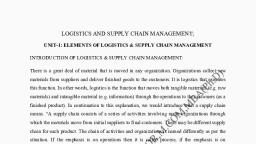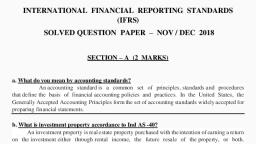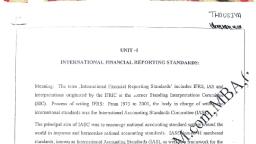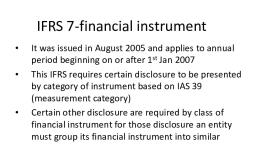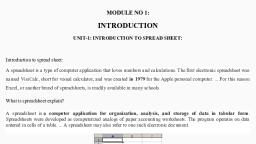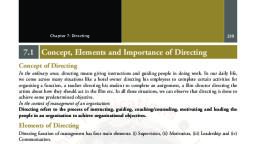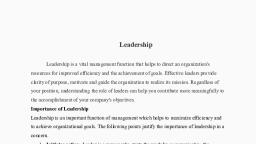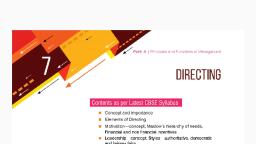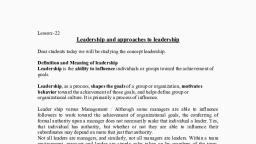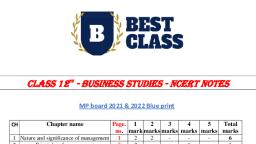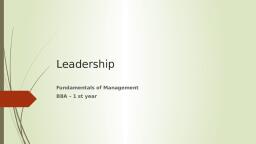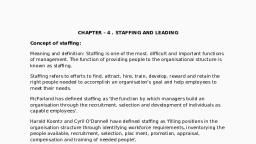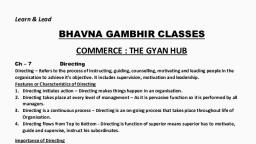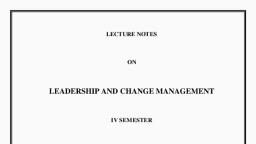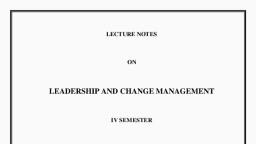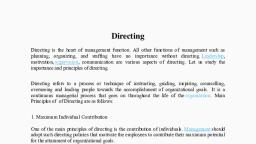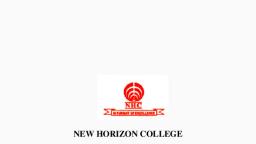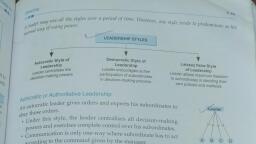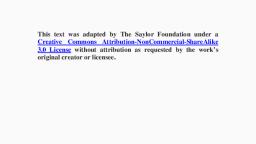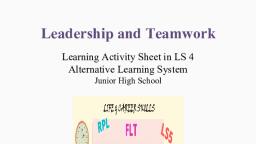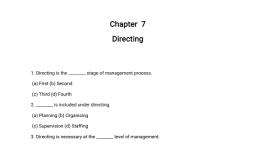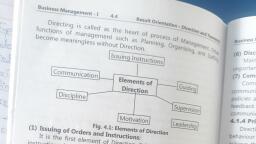Page 1 :
THEORIES OF LEADERSHIP:, , 1. Likert’s scale theory:, What is Likert leadership theory?, The Likert Management System is a theory about the various management styles a manager, can adopt within an organisation. In the '60s, Rensis Likert developed four management styles,, intended to describe the relationship, roles and involvement of managers and subordinates in, industrial environments. Likert's contributions in business management helped managers, organize their subordinates more effectively. Also, Likert founded the theory of participative, management, which was used to engage employees in the workplace and ultimately allow, them to enjoy their job more., The 4 management systems, established by Likert, include, Exploitative Authoritative system, Benevolent Authoritative system, Consultative system and, Participative system, , 1. Exploitative Authoritative system:, An exploitative-authoritative management system means that responsibility lies, with people in higher positions in the hierarchy. The people lower on the ladder, the, subordinates, don't influence the decision making and aren't involved in this process., Or, In the exploitative authoritative system, leaders have a low concern for people and use, methods such as threats and other fear-based methods to get their workers to conform., As a result of these methods, employees immediately have excellent performance upon, entering the organization., 2. Benevolent Authoritative system:
Page 2 :
The leader now uses rewards to encourage appropriate performance and listens more to, concerns lower down the organization, although what they hear is often rose-tinted,, being limited to what their subordinates think that the boss wants to hear., Or, The benevolent authoritative system uses less control over employees than the, exploitative authoritative system, however, this system motivates employees through, potential punishment and rewards. ... Employees in this system are involved in policymaking and group problem solving., 3. Consultative system:, The consultative system is characterized by a great flow of information both, horizontally and vertically. The subordinates feel free to discuss job-related issues with, the superiors and hence, the upward flow of communication is more into the, consultative system than a benevolent system., Or, Consultative. Consultative managers ask employees for feedback consistently and take, employee concerns seriously. They often have an open-door policy that encourages, employees to share what is and isn't working in the organisation. This type of, management style often leads to higher employee loyalty and less turnover., Example:, The consultative style is the standard or most commonly used style in everyday, conversations. ... Conversations between strangers, teachers and students, doctors and, patients make use of the consultative style. EXAMPLES: regular classroom, discussions, doctor-patient, etc., 4. Participative system:, Participative management style is management style positively associated with high, level of job satisfaction. It is based on the involvement of employees in decisionmaking, problem-solving in the company and empowering employees, as well as on, supporting their high autonomy, own initiative and creativity., Or
Page 3 :
Four processes influence participation. These processes create employee involvement as they, are pushed down to the lowest levels in an organization. The farther down these processes, move, the higher the level of involvement by employees. The four processes include:, 1. Information sharing, which is concerned with keeping employees informed about the, economic status of the company., 2. Training, which involves raising the skill levels of employees and offering development, opportunities that allow them to apply new skills to make effective decisions regarding, the organization as a whole., 3. Employee decision making, which can take many forms, from determining work, schedules to deciding on budgets or processes., 4. Rewards, which should be tied to suggestions and ideas as well as performance., BLAKE & MOUTON’S MANAGERIAL GRID THEORY:, Managerial Grid Theory was developed by R.R.Blake and J.S.Mouton which helps, managers in organizations to identify their leadership style.
Page 4 :
The grid consists of two dimensions, one is the Concern for People and the other one is Concern, for Production. The managerial grid helps the managers to identify their leadership style with 5, basic leadership styles,, , Country Club Management, Authority-Compliance Management, Impoverished Management,, Middle-of-the-road Management, and, Team Management., 1. Country Club Management:, It is a leadership style where the leader is more concerned and inclined towards the, social requirements of the members of his group rather the task. In such cases,, employees work in a very friendly environment but might not be productive. Employees, might not have strict schedules to follow and be disorganized. A leader following such, a leadership style will not be able to impose persistent powers upon his members. The, productivity of such group will be low even though there will be quite well, understanding among them., 2. Authority-Compliance Management:, It is a leadership style where the leader is more concerned about productivity rather, than the feelings of the members. The employees should be obedient and adhere to the, rules set by the leader strictly to obtain the desired results. Such a leader feels that needs, of the employees are not necessary or considers them as trivial. Such a leader can be, named as an autocratic one who believes in strict schedules and maximum productivity, to accomplish the objectives., 3. Impoverished Management:, It is a type of leadership style where the leader directs and divides the tasks, authorities, and responsibilities but does not go for a follow up of the plans made. Such a leader, has low concern for both the employees and the productivity. Their main agenda is not, to face any trouble even if it occurs and lets the members handle everything. Employees, under such a leader become disorganized due to workload and pressure and lack, coordination., 4. Middle-of-the-road Management:
Page 5 :
It is a type of leadership style where the leader is not highly ambitious regarding both,, the employees and the productivity. Such leaders make a balance between the, requirements of the employees and the objectives of the organization. But such a leader, is not able to fulfil both the needs and often conflicts arise. Such a leader communicates, well with the employees about the tasks as well as their concerns but that is not of great, help for the long-run. Such leaders experience only half-success in productivity and, satisfaction of employees., 5. Team Management:, It is a type of leadership style where the leader has high concern for the requirements, of the employees as well as the productivity. This is a model style which keeps the, employees motivated and satisfied along with high productivity as required by the, organization. Employees under such a leader have high team spirit and are committed, to the task assigned. Such a team has well-defined division of tasks and members are, greatly organized. Such a leader finds out the obstacles and helps solve the issues with, outstanding solutions with team work, bring out effective results for every issue and, organizational objectives., 3. HOUSE PATH GOAL THEORY:, The theory was developed by Robert House and has its roots in the expectancy theory of, motivation. The theory is based on the premise that an employee’s perception of expectancies, between his effort and performance is greatly affected by a leader’s behaviour. The leaders, help group members in attaining rewards by clarifying the paths to goals and removing, obstacles to performance. They do so by providing the information, support, and other, resources which are required by employees to complete the task., House’s theory advocates servant leadership. As per servant leadership theory, leadership is, not viewed as a position of power. Rather, leaders act as coaches and facilitators to their, subordinates. According to House’s path-goal theory, a leader’s effectiveness depends on, several employee and environmental contingent factors and certain leadership styles. All these, are explained in the figure 1 below:
Page 6 :
Leadership Styles, The four leadership styles are:, Directive: Here the leader provides guidelines, lets subordinates know what is expected of, them, sets performance standards for them, and controls behaviour when performance, standards are not met. He makes judicious use of rewards and disciplinary action. The style is, the same as task-oriented one., Supportive: The leader is friendly towards subordinates and displays personal concern for, their needs, welfare, and well-being. This style is the same as people-oriented leadership., Participative: The leader believes in group decision-making and shares information with, subordinates. He consults his subordinates on important decisions related to work, task goals,, and paths to resolve goals., Achievement-oriented: The leader sets challenging goals and encourages employees to reach, their peak performance. The leader believes that employees are responsible enough to, accomplish challenging goals. This is the same as goal-setting theory.

